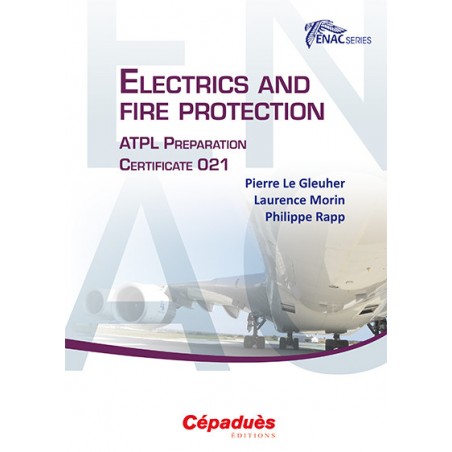






Commande avant 16h,
expédié le jour même (lu. - ve.)

Livraison express sous 48h.
This book is aimed at future pilots willing to study Electrics and fire protection (021) within the framework of ATPL Theoretical Certificates. It complies with EASA's Learning Objectives for the 021 Certificate. The chapters are all illustrated to facilitate the reader's comprehension. At the end of each chapter, the reader will find key-points highlighting the most important notions.
Pierre Le Gleuher is a former student pilot of the ENAC.
Laurence Morin is engineer and head of pilot theoretical training at the ENAC. She teaches Airframe, Systems and Electricity to future pilots and engineers at the ENAC.
Philippe Rapp is an electronics and electricity engineer. He used to teach Aircraft Electrical Systems to future pilots and Airport Electricity to future electronics engineers at the ENAC.He now works for the Technical Service of French Civil Aviation for energy and airport ground lighting.
SUMMARY
PART 1: REMINDERS OF ELECTRICITY BASICS
CHAPTER 1: ELECTROSTATICS
CHAPTER 2: DIRECT CURRENT
CHAPTER 3: ELECTROMAGNETISM
CHAPTER 4: ALTERNATING CURRENT
CHAPTER 5: PROTECTING ELECTRICAL CIRCUITS
PART 2 : AIRCRAFT ELECTRICAL CIRCUITS
CHAPTER 1: THE MAIN PRINCIPLES
CHAPTER 2: DISTRIBUTION
CHAPTER 3: ELECTRICAL FAULTS
PART 3: GENERATORS
CHAPTER 1: ROTATING MACHINES
CHAPTER 2: BATTERIES AND COUPLING IN DC CIRCUITS
CHAPTER 3: OTHER SOURCES OF CURRENT
PART 4: ELECTRIC MOTORS
CHAPTER 1: ELECTRIC MOTORS
PART 5 : SEMI-CONDUCTORS
CHAPTER 1: SEMI-CONDUCTORS AND LOGIC CIRCUITS
PART 6 : FIRE AND SMOKE PROTECTION
CHAPTER 1: FIRE AND SMOKE PROTECTION
| Référence : | 1117 |
| Nombre de pages : | 178 |
| Format : | 17x24 |
| Reliure : | Broché |
| Rôle | |
|---|---|
| Le Gleuher Pierre | Auteur |
| Morin Laurence | Auteur |
| Rapp Philippe | Auteur |
Livres de l'auteur Laurence Morin